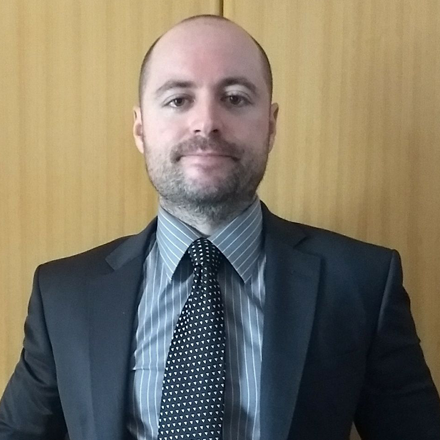
Brazil has recently made efforts to streamline the introduction and distribution of drugs.
Universal health coverage is a goal of many democracies, but achieving that goal requires implementing extensive reforms to existing health systems and making significant investments in public funding. Two recent essays in The Regulatory Review, one each by Carmel Shachar and Travis Carpenter, address some of the difficulties confronting the implementation of universal health care in the United States and Canada.
The challenges that these essays describe are also part of the legal and political debates in Brazil. The Brazilian Constitution, unlike the Canadian and the American Constitutions, expressly states in article 196 that “health is a right of all and a duty of the State and shall be guaranteed by means of social and economic policies.” This article is regulated by Federal Law 8,080 of 1990, which established the Unified Health System, or Sistema Único de Saúde (SUS). The SUS is composed of health services provided by public institutions at the federal, state, and municipal levels.
Brazilian courts usually interpret Federal Law 8,080 to require that the SUS provide not only free medical and hospital health care, but also free medications. The Brazilian Supreme Federal Court (STF), for example, has already ruled as much in State of Parana v. Office of the Parana State Prosecutor, where the court stated that “health is an inalienable constitutional right, guaranteed through the implementation of public policies, imposing on the State the obligation to create objective conditions that allow effective access to such service.”
This judicial understanding has led to the filing of thousands of lawsuits all over Brazil in which the plaintiffs usually seek access to drugs not offered by public hospitals and health centers, including drugs not approved by the Brazilian Health Regulatory Agency, known as Anvisa. As a result, federal, state, and local administrations have spent approximately $4 billion per year between 2010 and 2016 for the regular purchase of SUS drugs, of which $2 billion have been for purchases ordered by courts, according to a report by the Institute for Applied Economic Research. To meet such expenses, the total health care budget in fiscal year 2019 is estimated to reach $30 billion, almost double the national defense budget of $18 billion.
The Brazilian Congress, in an attempt to reduce expenses arising from lawsuits, acted in 2011 to approve amendments to Federal Law 8,080 streamlining SUS procedures for incorporation of new drugs. These amendments also created the National Committee for Health Technology Incorporation (CONITEC), which was charged with the task of conducting “comparative economic evaluations of the benefits and costs compared to the technologies already incorporated” and which forbade public hospitals to use therapies and drugs not approved by Anvisa.
The CONITEC follows a rigorous procedure for incorporating new drugs, including the analysis of technical and economic studies, including any requests for additional research, and public hearings. The economic analysis may be based on one of three criteria, including: cost-effectiveness analysis, which measures the consequences on units of clinical benefit such as years of life saved or number of events avoided; cost-utility analysis such as Quality-Adjusted Life Year (QALY) or Disability-Adjusted Life Year; or cost-benefit analysis, where all resources and health benefits are measured in monetary units. The Brazilian Ministry of Health acknowledges that Brazil has not officially adopted one of these economic criteria, but it does recommend that economic analyses at least include QALY ranges of one to three times the country’s GDP per capita.
For example, after receiving 2,187 written statements during public hearings, CONITEC approved in August a Novartis request for the SUS to incorporate the drug Sacubitril/Valsartana—known as Entresto in the United States—using QALY rates. In its decision, CONITEC stated that both drugs have been approved by health agencies in the UK, Canada, Australia, and France, and that their QALY rate would be around $6,000. But it is possible to find numerous judicial decisions since 2012 ordering states and the federal government to acquire Valsartana for free distribution, even prior to its approval by its incorporation into the SUS.
Congress’s 2011 legislative reforms did not solve the problem. Courts still do not apply a cost-benefit analysis on their decisions to order the provision of certain drugs. Usually they consider the right to health care to prevail over considerations of costs, regardless of CONITEC decisions.
Interestingly, there were in fact two relevant judicial decisions restricting distribution of drugs by hospitals and health centers. First, the Superior Court of Justice (STJ)—the highest appellate court in Brazil for non-constitutional matters—stated last year in State of Rio de Janeiro v. Oliveira that a litigant must meet three requirements to have the right to obtain a free drug: a medical prescription signed by a doctor affirming the indispensability of the medication, as well as affirming the ineffectiveness of other alternative drugs provided by the SUS; a financial hardship to bear the cost of the prescribed drug; and Anvisa approval of the drug.
Following the STJ decision, the STF ruled this year in Oliveira v. State of Minas Gerais that a patient has a right to receive a drug not approved by Anvisa if it is not experimental and if Anvisa approval of the drug is delayed, but only under three conditions. First, there must be a registration request for the drug. Second, the drug must have been already approved by other renowned agencies such as the U.S. FDA. Finally, there must be no other therapeutic alternative already approved in Brazil.
Of course, even with these recent decisions and the 2011 legislative changes, litigants will still have the right to obtain free medication if they prove that alternative drugs already available do not yield satisfactory results and that they cannot afford to buy the drug on their own. The costs of treatment in such cases are simply not considered to be a big issue by Brazilian courts, even if Anvisa has not yet approved the drug and even if the SUS administrator has decided not to provide such a drug.
The Brazilian reality of rising costs for medications demonstrates the need to define clear and prior limits to public health care programs, even though it involves the awkward discussion of issues such as effectively placing a price on human life.





